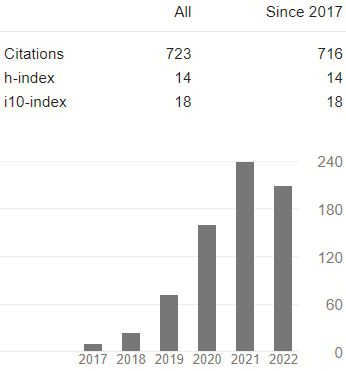SISTEM PENGENDALIAN INTERNAL, FRAUD DIAMOND, DAN LARCENY SEBAGAI EFEK MEDIASI WHISTLEBLOWINGSYSTEM (STUDI PADA BPK RI)
DOI:
https://doi.org/10.25170/jara.v11i1.54Keywords:
Internal control system, fraud diamond, whistleblowingsystem, larcenyAbstract
This research is aim to determine the effect of internal control system, fraud diamond, and whistleblowingsystem on larceny at BPK RI. Research data was obtained through questionnaires distributed torespondent, the employees in the work unit of General Bureau, IT Bureau, Human Resources Bureau and Leaders Secretariat Bureau BPK RI. So as many as 105 samples collected. This research used quantitative analysis technique with Structural Equation Modeling (SEM) processed with Amos 23. The test results showed : 1) Internal control system variable has positive and significant influence on whistleblowingsystem, 2) fraud diamond variable has not significant influence on whistleblowingsystem, 3) whistleblowingsystem variable has negative and significant influence on larceny, 4) internal control system variable has not significant influence on larceny, 5) fraud diamond variable has positive and significant influence on larceny. Therefore, the whistleblowingsystem mediation effect of the internal control system influence on larceny is perfectly significant. While the effect of fraud diamond on larceny is not proven to mediate.
References
Abdullahi, R. ’u, & Mansor, N. (2015). Fraud triangle theory and Fraud diamond theory. Understanding the convergent and divergent for future research. International Journal of Academic Research in Accounting Finance and Management Sciences, 5, 4, 38–45. https://doi.org/10.6007/IJARAFMS/v5-3/1823.
Brennan, N. & Kelly, J. (2007). A study of whistleblowing among trainee auditors. British Accounting Review , 39,1, 61–87.
Coenan, T. (2008). Essential of Corporate Fraud. New Jersey: John Wiley & Sons, Inc.
COSO. (2013) . Internal Control-Integrated Framework.
EQ, Z. M. & Wijaya, T. (2016). Panduan Teknik Statistik SEM & PLS dengan SPSS AMOS. Yogyakarta: Cahaya Atma Pustaka.
Goel, R. K., & Nelson, M. A. (2013). Effectiveness of whistleblower laws in combating corruption. BOFIT Discussion Papers, 9, 1–21. http://doi.org/10.2139/ssrn.2268429
Hall, James A. (2011). Sistem Informasi Akuntansi. Edisi 4. Buku 1. Jakarta: Salemba Empat.
Lembaga Perlindungan Saksi dan Korban (LPSK). (2011). Memahami Whistleblower. Jakarta.
Liyanarachchi, G., & Newdick, C. (2009). The impact of moral reasoning and retaliation on whistle-blowing: New Zealand evidence. Journal of Business Ethics, 89,1, 37–57. https://doi.org/10.1007/s10551-008-9983-x.
Meikhati, E., & Rahayu, I. (2015). Peranan audit internal dan pencegahan Fraud dalam menunjang efektivitas pengendalian (Studi kasus pada Yayasan Internusa Surakarta). Paradigma, 13,1, 77–91.
Nawawi, K. M. Z. A., & Salin, A. S. A. P. (2016). Internal controls and Fraud - Empirical evidence from oil & gas company. Journal of Financial Crime, 23,4. http://doi.org/10.1108/13590791011082797.
Nazir, M. (2014). Metode Penulisan. Bogor: Ghalia Indonesia.
Noviani, D. P., & Sambharakreshna, Y. (2014). Pencegahan kecurangan dalam organisasi pemerintahan. JAFFA, 2,2, 61–70.
Puspasari, N. (2015). Fraud theory evolution and its relevance to Fraud prevention in the village government in Indonesia. Asia Pacific Fraud Journal, 1(2), 177. https://doi.org/10.21532/apfj.001.16.01.02.15.
Robinson, S. N., Robertson, J. C., & Curtis, M. B. (2012). The effects of contextual and wrongdoing attributes on organizational employees’ whistleblowing intentions following Fraud. Journal of Business Ethics, 106,2, 213–227. https://doi.org/10.1007/s10551-011-0990-y.
Ruankaew, T. (2013). The Fraud factors. International Journal of Management and Administrative Sciences (IJMAS), 2(2), 1–5.
Ruankaew, T. (2016). Beyond the Fraud diamond. International Journal of Business Management & Economic Research, 7,1, 474–476.
Rustiarini, N. W., & Sunarsih, N. M. (2015). Fraud dan whistleblowing: Pengungkapan kecurangan akuntansi oleh auditor pemerintah.Simposium Nasional Akuntansi 18 Medan.
Sangadji, E. M., & Sopiah. ( 2010). Metodologi Penulisan – Pendekatan Praktis dalam Penulisan. Yogyakarta: Andi.
Sari, N. L. P. P., Yuniarta, G. A., &Adiputra, I.M. P. (2015). Pengaruh efektifitas sistem pengendalian internal, ketaatan aturan akuntansi, persepsi kesesuaian kompensasi dan implementasi good governance terhadap kecenderungan Fraud (Studi empiris pada SKPD di Kabupaten Tabanan). e-Journal S1 Ak Universitas Pendidikan Ganesha, 13.
Saud, I. M. (2016). Pengaruh sikap dan persepsi kontrol perilaku terhadap niat whistleblowing internal-eksternal dengan persepsi dukungan organisasi sebagai variabel pemoderasi. Jurnal Akuntansi Dan Investasi, 17(2), 209–219. https://doi.org/10.18196/jai.2016.0056.209-219.
Sawyer, L. B., Mortimer, A. D., & James, H. S. (2005). Sawyer's Internal Auditing : Audit Internal Sawyer. Buku 1. Jakarta: Salemba Empat.
Somers, M. & Casal, J. (2011). Type of wrongdoing and whistle-blowing: Further evidence that type of wrongdoing affects the whistle-blowing process. Public Personnel Management, Vol 40, Issue 2, pp. 151 – 163.
Sugiyono. (2015). Statistika Untuk Penulisan. Bandung: Alfabeta.
Sulastri, & Simanjuntak, B. H. (2014). Fraud pada sektor pemerintah berdasarkan faktor keadilan kompensasi, sistem pengendalian internal, dan etika organisasi pemerintah (Studi empiris Dinas Pemerintah Provinsi DKI Jakarta). E-Journal Magister Akuntansi Trisakti, 1 Nomor. 2(September), 199–227.
Tuanakotta, T. M. (2014). Akuntansi Forensik dan Audit Investigatif. Jakarta: Salemba Empat.
Tunggal, A. W. (1992). Pemeriksaan Keuangan. Jakarta: Melton Putra.
Widhiarso, W. (2010). Berkenalan dengan analisis mediasi : Regresi dengan melibatkan variabel mediator (Bagian pertama). Unpublished Manuscript, 1, 1–5.
Wolfe, D.T.; Hermanson, D. R. (2004). The Fraud diamond: Considering the four elements of Fraud. CPA Journal; Dec 2004, 74, 12, p38.
http://www.acfe.com/
http://bri.co.id
http://bpk.go.id
http://finance.detik.com/moneter/644494/gcg-bri-terbaik-dari-seluruh-bumn. Diakses 16 April 2017.
http://news.detik.com/berita/1944148/korupsi-rp-29-m-di-bank-bri-tamini-square-kasasi-jaksa-dikabulkan. Diakses April 2017.
http://www.sayangi.com/2013/07/24/2911/ekonomi-bisnis/pencurian-aset-perusahaan-migas-kembali-terjadi. Diakses April 2017.
http://www.tribunnews.com/nasional/2017/05/27/icw-ada-6-kasus-suap-yang-melibatkan-oknum-pejabat-bpk-dalam-kurun-waktu-2015-2017.Diakses Mei 2017.
Downloads
Published
Issue
Section
License
Authors who publish with this journal agree to the following terms:
- Authors retain copyright and grant the journal right of first publication with the work simultaneously licensed under a Creative Commons Attribution-ShareAlike 4.0 International License that allows others to share the work with an acknowledgment of the work's authorship and initial publication in this journal.
- Authors are able to enter into separate, additional contractual arrangements for the non-exclusive distribution of the journal's published version of the work (e.g., post it to an institutional repository or publish it in a book), with an acknowledgment of its initial publication in this journal.
- Authors are permitted and encouraged to post their work online (e.g., in institutional repositories or on their website) prior to and during the submission process, as it can lead to productive exchanges, as well as earlier and greater citation of published work.














